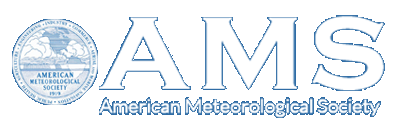Short Courses
AMS Short Course
‘Space-borne radar’
Date: 15 September 2019
Time Schedule:
13:00-15:00: General introduction and space-borne radar for precipitation measurement (Dr. Iguchi)
15:30-17:00: Spaceborne radar for cloud measurements (Dr. Kollias)
Location: Conference Room 7 (the second floor of the annex building).
Instructors: Dr. T. Iguchi and Dr. P. Kollias
Preparations: None
Description:
Spaceborne radars provide a unique, global view of clouds and precipitation. Up to date, three very successful space-borne radars missions have been realized: The Precipitation Radar (PR) on board the Tropical Rainfall Measuring Mission (TRMM), the Dual-frequency Precipitation Radar (DPR) on board the core observatory of the Global Precipitation Measurement (GPM) mission, and the Cloud Profiling Radar (CPR) on the CloudSat. In addition, a radar on a Cubesat form was recently successfully demonstrated, the Earth Clouds Aerosols Radiation Explorer (EarthCARE) mission that will carry the first Dopplerized CPR is scheduled for launch in 2021 and the latest NASA Decadal study designates a multi-frequency radar mission to study Clouds Convection and Precipitation (CCP). The aforementioned activities highlight the growing interest in space-based radar observations with increasing complexity and sophistication.
This course is a general introduction to space-borne radar. Space-borne radar has its own peculiarities that originate in its measurement geometry and the constraints as a satellite-borne instrument that include the mass, power consumption and data rate. As a result, processing for space-borne radar data differs from that of ground-based radar data. The course will introduce participants to both hardware and software peculiarities of space-borne radar.
The course consists of two lectures. The first lecture is a general introduction to space-borne precipitation radar and some specific properties of the PR and DPR that have similar characteristics to measure precipitation (rain and snow). Their orbits are non-sun-synchronous and they can provide information of diurnal variations. They scan their beams in the cross-track direction to increase the observation coverage and measure precipitation distributions nearly simultaneously with the radiometers on the same satellites. The spaceborne radar lecture will also describe the algorithms for retrieving various parameters of precipitation.
The second lecture introduces the CloudSat and EarthCARE CPR's, their capabilities and differences. Both CPR's are in a sun-synchronous polar orbit and look only at nadir to measure vertical profiles of clouds. The CPR cloud and precipitation retrievals and the synergy with the CALIPSO lidar that fly in formation with the CPR will be described. The lecture will also address the challenges in measuring Doppler velocities from space and will discuss future spaceborne radar concepts.
Agenda:
-
General introduction and space-borne radar for precipitation measurement (given by Toshio Iguchi, two hours)
- How we measure rainfall
- Peculiarities of space-borne radar
- hardware overview of TRMM/PR and GPM/DPR
- TRMM/PR rain retrieval algorithm
- GPM/DPR algorithm
- Future issues
-
Spaceborne radar for cloud measurements (CloudSat and EarthCARE) (given by Pavlos Kollias, 1.5 hours).
- Requirements from radar-based cloud detection from space
- CloudSat CPR cloud and precipitation retrieval algorithms
- The EarthCARE CPR: description and capabilities
- How we measure Doppler velocity from space
- Discussion on future mission concepts
Information: Please contact Dr. Toshio Iguchi (National Institute of Information and Communications Technology).
Email: TTIguchi(at)aol.com (at)=@

